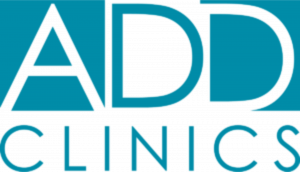ADD in the Digital Age: How Screen Time Fuels Attention Challenges
“Digital consumption has changed how attention develops and how it is disrupted,” said Dr. Owen. “The frequency, intensity, and accessibility of screen content alter dopamine activity and reinforce short-term engagement over sustained focus.”
This shift has raised concerns among educators, parents, physicians, and employers. While digital tools provide many benefits, their influence on cognitive development—especially in those with attention vulnerabilities—has prompted increased clinical scrutiny.
The Dopamine Loop and Instant Gratification
At the neurological level, ADD is associated with impaired regulation of dopamine, a neurotransmitter critical to focus, reward, and impulse control. Digital content—especially fast-paced, interactive, or reward-based media—stimulates dopamine in rapid bursts. Over time, this conditions the brain to seek constant novelty and instant gratification.
Unlike traditional learning environments or real-world tasks, digital platforms rarely require prolonged attention. Scrolling, swiping, or clicking through videos and games trains the brain to shift focus frequently. For individuals already predisposed to attention difficulties, this reinforcement creates further challenges in sustaining focus on routine, low-stimulus tasks like reading, completing forms, or participating in meetings.
Screen Time in Children and Adolescents
Children and adolescents are particularly vulnerable to digital overstimulation. Developing brains form synaptic patterns based on regular input. When that input is dominated by rapid-fire content—such as social media, video games, or short-form videos—the brain becomes wired for fast transitions and high-reward cycles.
In clinical settings, this may present as increased irritability, difficulty with delayed gratification, or resistance to low-stimulus activities like homework or structured conversation. Pediatric cases of ADD are now frequently complicated by high screen usage, which can mimic or exacerbate core symptoms, making diagnosis and treatment more complex.
Dr. Owen noted that the presence of devices in nearly all settings—home, school, vehicle, and even bedtime routines—means that attention development is being continuously shaped by screen-based habits, often unintentionally.
Adults and Work-Related Impacts
Adults with attention challenges are also seeing new symptom patterns. The always-on digital environment includes constant alerts, multitasking demands, and the expectation of immediate response. These conditions reduce opportunities for deep focus and contribute to fragmented attention throughout the workday.
Many adult patients report difficulty completing complex tasks, remembering details, or staying engaged in long meetings. The influx of messages, emails, and notifications further interrupts focus and increases cognitive fatigue. Over time, this pattern can lead to diminished job performance, stress, and reduced satisfaction with both work and personal life.
For undiagnosed adults, the modern workplace may be the first time that persistent attention issues become undeniable. As digital dependency increases, so does the visibility of attention dysfunction in professional settings.
Diagnostic and Clinical Observations
The digital age has created a blurred line between environmental distraction and intrinsic neurodevelopmental differences. In clinical assessments, distinguishing between learned attention disruption and true ADD requires thorough evaluation, including behavior patterns that persist independent of screen exposure.
Diagnostic tools must now account for external digital influences when measuring executive function, impulse control, and task persistence. Treatment plans often include both pharmacologic and behavioral strategies but now also emphasize digital hygiene—setting limits on screen time, prioritizing analog routines, and promoting activities that engage long-term concentration.
ADD Clinics, under Dr. Owen’s direction, incorporates lifestyle assessments into the evaluation process. These assessments help determine whether observed attention deficits are rooted in neurobiology, digital overstimulation, or a combination of both.
Screen Management in Treatment Plans
Effective ADD treatment in the digital age includes guidance on media consumption. Clinical plans may include structured screen limits, scheduled device-free periods, and cognitive exercises designed to rebuild attention span. Encouraging physical activity, sleep regulation, and non-screen hobbies plays an important role in reshaping attention pathways.
Parental involvement, in pediatric cases, often includes education on setting boundaries and modeling healthy device habits. In adult cases, workplace accommodations and self-monitoring strategies are introduced to reduce digital distraction and reinforce focus.
Broader Implications and Future Research
The connection between screen use and attention disorders is now the subject of ongoing research, with emerging studies exploring how specific types of content—such as high-speed animation or competitive gaming—affect neurological development. While digital tools are not inherently harmful, their overuse or misuse in attention-sensitive individuals can compound underlying challenges.
Clinicians across disciplines are calling for more education on the cognitive impacts of digital consumption. Schools, employers, and caregivers are being urged to support balanced screen use, especially among vulnerable populations.
Morgan Thomas
Rhino Digital, LLC
+1 504-875-5036
email us here
Visit us on social media:
Facebook
Legal Disclaimer:
EIN Presswire provides this news content "as is" without warranty of any kind. We do not accept any responsibility or liability for the accuracy, content, images, videos, licenses, completeness, legality, or reliability of the information contained in this article. If you have any complaints or copyright issues related to this article, kindly contact the author above.
Huntington’s Disease: Charting a New Path with Disease-Modifying Therapies and Strategic Innovation
Paramount Wellness Retreat Addresses the Link Between ADHD and Addiction with Specialized Dual Diagnosis Treatment
Aspire Systems wins Silver Stevie® Award in 2025 American Business Awards®
Kalendarium
Więcej ważnych informacji
 Jedynka Newserii
Jedynka Newserii

 Jedynka Newserii
Jedynka Newserii

Handel

Ze względu na różnice w cenach surowce wtórne przegrywają z pierwotnymi. To powoduje problemy branży recyklingowej
Rozporządzenie PPWR stawia ambitne cele w zakresie wykorzystania recyklatów w poszczególnych rodzajach opakowań. To będzie oznaczało wzrost popytu na materiały wtórne pochodzące z recyklingu. Obecnie problemy branży recyklingu mogą spowodować, że popyt będzie zaspokajany głównie przez import. Dziś do dobrowolnego wykorzystania recyklatów nie zachęcają przede wszystkim ceny – surowiec pierwotny można kupić taniej niż ten z recyklingu.
Przemysł spożywczy
Rośnie presja konkurencyjna na unijne rolnictwo. Bez rekompensat sytuacja rolników może się pogarszać

Rolnictwo i żywność, w tym rybołówstwo, są sektorami strategicznymi dla UE. System rolno-spożywczy, oparty na jednolitym rynku europejskim, wytwarza ponad 900 mld euro wartości dodanej. Jego konkurencyjność stoi jednak przed wieloma wyzwaniami – to przede wszystkim eksport z Ukrainy i niedługo także z krajów Mercosur, a także presja związana z oczekiwaniami konsumentów i Zielonym Ładem. Bez rekompensat rolnikom może być trudno tym wyzwaniom sprostać.
Transport
Infrastruktury ładowania elektryków przybywa w szybkim tempie. Inwestorzy jednak napotykają szereg barier

Liczba punktów ładowania samochodów elektrycznych wynosi dziś ok. 10 tys., a tempo wzrostu wynosi ok. 50 proc. r/r. Dynamika ta przez wiele miesięcy była wyższa niż wyniki samego rynku samochodów elektrycznych, na które w poprzednim roku wpływało zawieszenie rządowych dopłat do zakupu elektryka. Pierwszy kwartał br. zamknął się 22-proc. wzrostem liczby rejestracji w ujęciu rocznym, ale kwiecień przyniósł już wyraźne odbicie – o 100 proc.
Partner serwisu
Szkolenia

Akademia Newserii
Akademia Newserii to projekt, w ramach którego najlepsi polscy dziennikarze biznesowi, giełdowi oraz lifestylowi, a także szkoleniowcy z wieloletnim doświadczeniem dzielą się swoją wiedzą nt. pracy z mediami.










.gif)

 |
| |
| |
|